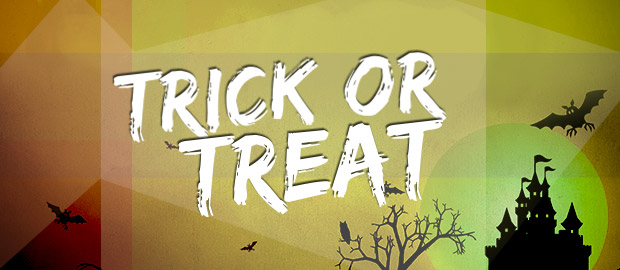
So often we celebrate holidays in our countries without knowing where they originated from. We expose ourselves, our children, family and friends to the spiritual significance of such holidays.
We do not celebrate Halloween in South Africa but the effects of the American celebrations have been felt here. In almost every shop you can find candy that looks either like a spider or something weird, gooey and “bloody”. Obviously kids would want to try out these weird looking treats because they are only seen in the shops once a year.
I recently went on the internet to look at where the whole Halloween holiday originated from and needless to say I will not be celebrating Halloween anytime soon.
I found the following explanation of Halloween’s origin on http://kennethcopelandministries.org:
Halloween, which directly stems from Irish, Scottish and British folk customs, was celebrated as the Druids’ autumn festival. The Druids were an order of priests who worshiped nature. This holiday was originally celebrated to honor Samhain, lord of the dead, on October 31 (the end of the summer). The Druids believed that on this date, Samhain called all the wicked souls which had been condemned within the last year to live in animal bodies. He was believed to have released them in the form of spirits, ghosts, fairies, witches and elves. According to druidic tradition, these souls of the dead roamed the city on Halloween night and returned to haunt the homes where they once lived. The only way the current occupants of the house could free themselves from being haunted was to lay out food and give shelter to the spirit during the night. If they did not, the spirit would cast a spell on them. That is where the phrase “trick or treat!” comes from: They would be tricked if they did not lay out a treat.

The jack-o’-lantern was also a part of this belief system. The carved pumpkin symbolized a damned soul named Jack. According to the tale, Jack was not allowed into heaven or hell. So he wandered around in the darkness with his lantern until Judgment Day. Fearful people hollowed out turnips (and later pumpkins in the United States), carved an evil face on them, and a lit candle inside to scare him and other evil spirits away. The Druids had other outlandish beliefs which have since turned into tradition. For example, they were afraid of black cats because they believed that when a person committed evil, he would be turned into a cat. Cats were thus considered to be evil. To scare them away, the Druids decorated their homes with witches, ghosts and the like. They also decorated with cornstalks, pumpkins and other goods in offering of thanks and praise to their false gods.
In addition to being Halloween, October 31 was also the New Year’s Eve of the Celts and Anglo-Saxons. To celebrate, they built huge bonfires on hilltops to frighten away evil spirits, and often offered their crops and animals to the evil ones as a sacrifice—sometimes they even offered themselves. Some people believe the only significance of Halloween was as All Hallows’ Eve, the evening before All Saints’ Day. But All Saints’ Day was originally celebrated by the Catholic Church in May. Around A.D. 43 the Romans conquered the Celts and changed All Saints’ Day to November 1. The celebration remained the same with minor additions. The Roman Harvest Festival was then held in honor of Pamona, the goddess of fruit and trees (the practice of bobbing for apples is derived from this). And the Romans also wanted to honor the newly overpowered descendants of the Druids in Germany and Scandinavia, so All Saints’ Day and Halloween became unified with the same focus of reverencing the dead.
The combination of these customs has developed into the traditional celebration we call Halloween.
